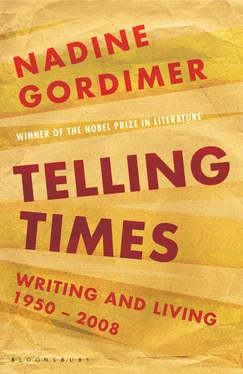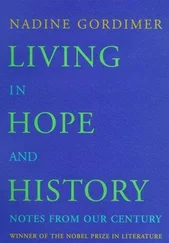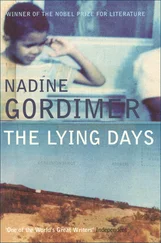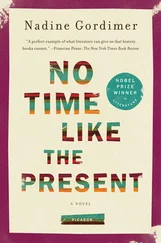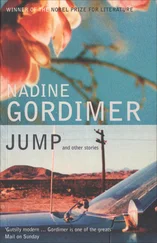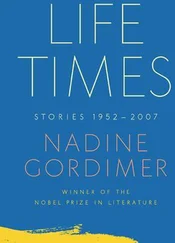8 In 2010, 49,320,500. Unusual increase due not to birth rate but influx of refugees, principally from Zimbabwe.
The Prison-House of Colonialism
9 Ruth First was assassinated by the apartheid regime in August 1982. An apparently ordinary parcel sent to her in Mozambique exploded — it contained a bomb — as she opened it, killing her. 2010: she is one of the revered heroes of the South African freedom struggle.
Letter from the 153rd State
10 Now Harare.
11 2010: now become a dictator, Mugabe has brought his country to suffering and disaster..
The South African Censor: No Change
12 Published and banned that year …
13 Etienne le Roux’s novel.
Living in the Interregnum
14 Total population 1980, 20 million, of which 4.5 million are white. Survey of Race Relations in South Africa 1981 , South African Institute of Race Relations, 1981.
15 Rainer Maria Rilke, ‘Ein Frauenschicksal’ (A Woman’s Fate), in Selected Poems of Rainer Maria Rilke , translated by C. F. MacIntyre, University of California Press, Berkeley 1941.
16 Edmundo Desnoes, Memories of Underdevelopment , Penguin, Harmondsworth, 1973.
17 Bishop Desmond Tutu, Frontline , no. 5, vol. 12, April 1982.
18 Czeslaw Milosz, ‘The Accuser’, in Bells in Winter , Ecco, New York, 1978.
19 Walter Benjamin, ‘What Is Epic Theater?’ Illuminations , Schocken, New York, 1969.
20 Nikolai G. Chernyshevsky, Polnoye sobraniye sochinenii , vol. 3. Paraphrased from the quotation in the English translation by Tibor Szamuely, ‘The Highroad of History Is Not the Sidewalk of the Nevsky Prospekt’, The Russian Tradition , edited by Robert Conquest, McGraw-Hill, New York, 1975.
21 Walter Benjamin, ‘What Is Epic Theater?’
22 The Star , Johannesburg, 4 August 1982.
23 The US has a 20 per cent slice under the weighted voting system of the IMF and so outvoted all loan opponents combined. The US consequently surely has a corresponding responsibility for how the money South Africa receives is being spent. Is there any evidence that this responsibility is being taken up?
The Idea of Gardening
24 ‘But wait till you can see HORROR,/my child, written on the sun.’ Friston, the missionary, in South Africa, in William Plomer’s Turbott Wolfe , The Hogarth Press, London, 1965.
New Notes from Underground
25 Terrace, verandah.
The Essential Gesture
26 From Writing Degree Zero , in Barthes, Selected Writings , edited and introduced by Susan Sontag, Fontana, London, 1983, p. 31.
27 Albert Camus, Carnets 1942–51.
28 Ingoapele Madingoane, Africa My Beginning , Ravan Press, Johannesburg, 1979; Rex Collings, London, 1980.
29 Ernst Fischer, The Necessity of Art: A Marxist Approach , translated by Anna Bostock, Penguin, Harmondsworth, 1963, p. 47.
30 See H.I.E. Dhlomo, ‘Valley of a Thousand Hills’, reprinted in his Collected Works , edited by N. Visser and T. Couzens, Ravan Press, Johannesburg, 1985; Sol T. Plaatje, Mhudi , edited by Stephen Gray, introduction by Tim Couzens, Heinemann, London; Three Continents Press, Washington DC, 1978; Native Life in South Africa , Longman, London, 1987; and The Boer War Diary of Sol T. Plaatje , edited by J. L. Comaroff, Macmillan, Johannesburg, 1973; Thomas Mofolo, Chaka: An Historical Romance , new translation by Daniel P. Kunene, Heinemann, London, 1981.
31 Among the most recent examples: Njabulo Ndebele, Fools , Ravan Press, Johannesburg, 1983; Longman, London, 1986; Ahmed Essop, The Emperor , Ravan Press, Johannesburg, 1984; and Es’kia Mphahlele, Afrika My Music , Ravan Press, Johannesburg, 1984.
32 George Steiner, review of E. M. Cioran, Drawn and Quartered, The New Yorker , 16 April 1984, p. 156.
33 Vissarion Belinsky, 1810–48. The quote is from my notebook: unable to locate source.
34 Octavio Paz, ‘Development and other mirages’, from The Other Mexico: Critique of the Pyramid , translated by Lysander Kemp, Grove Press, New York, 1972, p. 48.
35 The Letters of Gustave Flaubert 1857–1880 , selected, edited and translated by Francis Steegmuller, Harvard University Press, Cambridge, MA and London, 1982.
36 Susan Sontag, ‘Approaching Artaud’, in Under the Sign of Saturn , Farrar, Straus and Giroux, New York, 1980, p. 15: ‘… authors … recognised by their effort to disestablish themselves, by their will not to be morally useful to the community, by their inclination to present themselves not as social critics but as seers, spiritual adventurers, and social pariahs’.
37 Letter to Max Brod, quoted in Ronald Hayman, K: A Biography of Kafka , Weidenfeld & Nicolson, London, 1981, p. 237.
38 Michel Tournier, Gemini , translated by Anne Carter, London: Collins; Garden City, NY: Doubleday, 1981.
39 John Bayley, review of Akhmatova: A Poetic Pilgrimage by Amanda Haight, Observer , 31 October 1976, p. 29.
40 From Isaiah Berlin, Russian Thinkers , The Hogarth Press, London, 1978, p. 303.
41 ‘The Story-Teller’, in Illuminations , pp. 108–9.
Letter from Johannesburg
42 A ‘State of Emergency’ in South Africa was declared by government in 1960, lifted, redeclared, extended, through the years to 1986, on and off.
Huddleston: A Sign
43 ‘… prayer consists of attention … Not only does the love of God have attention for its substance; the love of our neighbour, which we know to be the same love, is made of this same substance … The capacity to give one’s attention to a sufferer is a very rare and difficult thing; it is almost a miracle; it is a miracle … Warmth of heart … pity, are not enough.’ Simone Weil, Waiting on God , Routledge, London, 1951, pp. 51, 58.
The Gap Between the Writer and the Reader
44 Roland Barthes, S/Z , translated by Richard Miller, preface by Richard Howard, Hill and Wang, 1974, p. 5.
45 Richard Howard, ‘A Note on S/Z ’, preface to S/Z by Roland Barthes, p. xi.
46 Harry Levin, ‘From Obsession to Imagination: The Psychology of the Writer’, Michigan Quarterly Review , no. 3, vol. 12, summer 1974, p. 190.
47 Roland Barthes, S/Z , p. 21.
48 Jorge Luis Borges, ‘The Congress’, The Book of Sand , translated by Norman Thomas di Giovanni, Penguin, 1979, p. 33.
49 Italo Calvino, ‘Whom Do We Write For?’, The Literature Machine , translated by Patrick Creagh, Secker and Warburg, London, 1987, p. 86.
50 John Berger, ‘An Explanation’, Pig Earth , Pantheon, New York, 1979, p. 9.
51 Lorrie Moore, New York Times Book Review , 3 December 1989, review of Love Life by Bobbie Ann Mason, Harper and Row, New York, 1989.
Censorship — The Final Solution
52 Three of Nadine Gordimer’s novels were banned successively in South Africa: A World of Strangers, The Late Bourgeois World and Burger’s Daughter .
53 I had gathered this information by questioning some reaction, from all those violently opposed to Rushdie’s visit, to obvious points in the narrative any reader would recognise. Blank response. I was a member of a group of writers and journalists who met with the Muslim religious leader and his followers who declared to us that if Rushdie set foot on South African soil he would be killed.
Censorship and its Aftermath
Читать дальше
